Accidents and injuries occur every day. It is a part of life and it is something that is often out of our control. What we can control, however, is how we deal with medical emergencies when they do happen. When the unexpected event does arise, it is a good idea to remember a simple phrase: Stop-Think-Act. It only takes a few seconds, but those few seconds could save a life – even your own.
Related: DIY Dollar Store First Aid Kit
Stop – Don’t rush into a situation. Stop where you are and assess or observe the scene.
Think – If you risk your safety and put yourself into harm’s way, you won’t be doing anyone any good. Form an action plan that considers your safety as well as that of the injured parties.
Act – Call for help by calling 911 and alerting EMS or other needed emergency personnel. Proceed with assisting those in need.
Knowing the basics of first aid is the next step in being prepared for anything until the ambulance gets there. All members of the group, from the youngest to the oldest, should have a grasp of what they can safely do until the paramedics or other help arrives. Here are 5 first aid skills ever senior should know and get proper training for.
Related: 40 Bizarre Home Remedies Our Grandparents Taught Us That Actually Work
CPR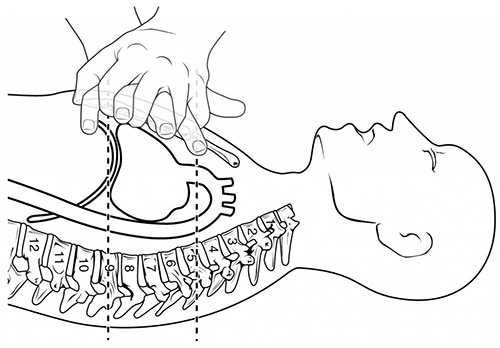
Cardiopulmonary resuscitation is one of the most important life-saving skills a person can learn. CPR is used to treat a patient who is in cardiac arrest. When in cardiac arrest, the person’s heart stops beating and the blood is no longer being pumped to the brain and extremities. Damage and death can occur if the heart is not restarted or kept pumping until help arrives.
CPR is comprised of two components: rescue breathing and chest compressions. There is some debate currently regarding the necessity of rescue breathing and the timing of the chest compressions. It is important to acknowledge that chest compressions can injure the patient, especially older people who have bones that may be more brittle. Due to the changing recommendations, it is advisable to seek training and certification from a professional before administering CPR.
Heimlich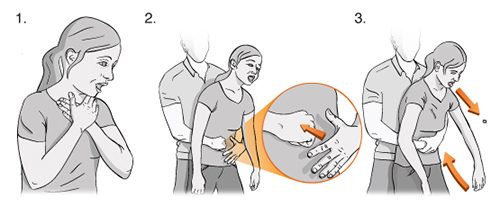
The Heimlich maneuver is a common method to help a choking patient. Before starting the maneuver, ask the person to nod if they are indeed choking on a foreign object – they may not be able to verbalize it, so ask for that nod.
Once it is determined they are choking, position yourself behind the patient. Wrap your arms around them, placing your fist between their belly button and their ribcage with your other hand wrapped around your fist. Deliver a quick, sharp thrust upward and continue doing so until the foreign object is dislodged and the patient can breathe. Keep in mind that this is for adult patients only. Children and kids need different methods because of their sizes.
Shock
When a person goes into shock, their brain isn’t getting enough oxygen to function. The patient will appear pale and may act disoriented. They may say they are feeling dizzy and/or faint. Shock can occur for many reasons: an accident, illness, loss of blood and body fluids, an infection, or even an allergic reaction.
When symptoms of shock are presenting themselves, have the patient lie down on their back with their feet elevated on a pillow or cushion. Don’t allow them anything to drink as choking can occur as they become more disoriented. If they appear to be choking or they have blood or fluid coming out of their mouth, immediately roll them over onto one side. Keeping them warm is crucial, covering them with a blanket can help until emergency personnel arrives.
Stroke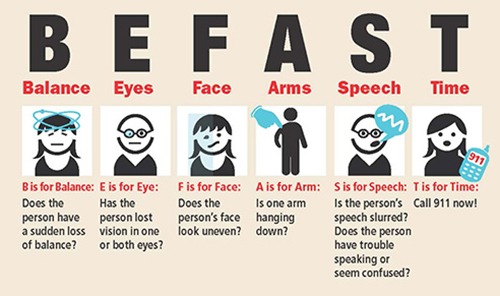
A stroke can happen to anyone at any time. Even though it is usually thought of as an older adult’s issue, age is not the determining factor. It is something that even an infant can go through as a stroke is when a blockage or small blood clot occurs in a blood vessel going to the brain. Seconds count when the brain is being deprived of blood carrying critical oxygen.
Giving the patient an aspirin while waiting for EMS may help open the blood vessels and veins to allow some oxygen to get through. Before doing this, be sure they aren’t allergic to aspirin or that it won’t have an interaction with medicines they are on.
Symptoms of a stroke can appear instantly or come on gradually. They may include:
- difficulty seeing out of one or both eyes
- disorientation and/or dizziness
- one side of the body drooping
- sudden numbness
- walking difficulties
You can determine if a person is experiencing a stroke by asking them to smile and noting if one side of their mouth is drooping. Another technique is the have them raise both arms together and see if one side is lower than the other or they are uneven.
Wound Care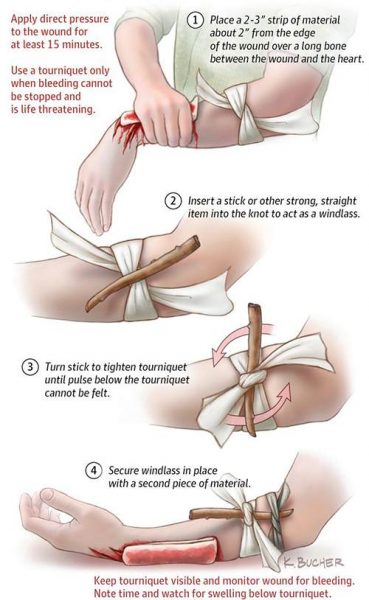
When a person is cut or bleeding heavily, it is critical to stop the bleeding. Problems with blood clotting are common with older patients and those on blood thinning medicines. Even a small cut can become life-threatening if the bleeding can’t be stopped.
Have the patient raise the wounded limb above their heart to help slow the blood pressure to the affected area. For legs, have them lie down and place the injured leg on a cushion. Using a sterile bandage, clean cloths, or whatever you have available, put pressure directly on the wound.
Keep applying pressure until the bleeding completely stops and until help arrives. If the material you are using becomes soaked, don’t remove it. Just add more cloths or bandages over the top of the originals while maintaining pressure on the wound. Never remove the pressure as it could reopen the wound or increase the pressure of the blood flow to the area.
Knowing how to help someone (or even yourself) in an emergency situation is a skill that will never go to waste. Take a CPR or first aid class to learn the basics from a trained professional. Training is available in almost every community in the country, often for free. When you are faced with an emergency, just remember to keep yourself safe and out of harm’s way while helping others.
You may also like:
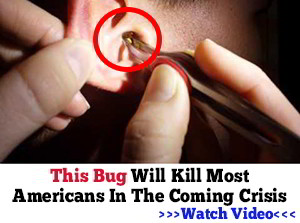 12 Old Fashioned Arthritis Remedies Your Ancestors Used
12 Old Fashioned Arthritis Remedies Your Ancestors Used
How to Make Your House Invisible to Looters (video)
Potassium Permanganate: Why You Need It in Your Survival Kit?
The Most Powerful Natural Antibiotics Known to Mankind

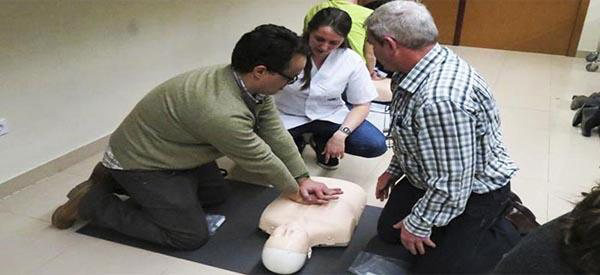













I would advise taking a first aid and cpr course..A lot of Vol.Ambulance services offer the course for low or no cost..Also check out First Aid and buddy care..Teaches a lot of techniques used in the field ( improvised )
Outlaw gave some good info. You can also call the American Red Cross for classes, or your local fire dept. Most fire departments host classes, or can give you info on who to call. I am a Fire/Medic with a department, and we teach classes several times each year. If you live where you have a Regional Trauma Ctr you can also check with their EMS department.
Calling 911? Sound like talking down to seniors, even pets can be trained for that. LOL Of course, taking a first aid course is a good thing in theory, unfortunately, having taken two of said courses, they were useless asides from CPR and the Heimlich maneuver. (Plus both times the trainers had friends present and we got to hear about their lives. In one case, I actually asked them to wait until later since we were almost out of time.) Number one thing you need is a really good first aid book (with illustrations) and a really good book on how to treat all kinds of medical conditions in a disaster. Of course a first aid kit with way more than the essentials. That will make you indispensable (outside of actually going to college for years to become a doctor or nurse), since hopefully you will take the time to study them and practice following the illustrations and the internet. I’m 70 and my first aid kit consists of two large tool plastic boxes filled to the brim with things mentioned in both books. Plus, 5 first aid skills will not make anyone indispensable. Going beyond the basics and learning about medicinal plants will. Plenty of books for that, since you tend to forget things (regardless of age), plus, books stay after you are dead, to help others. Since, I have zero plans to bug out. I’ve been planting medicinal plants all over my 1/3 acre, because what use it it to know what can help if you don’t have access to them. (Wild edibles also.) I know this article means well, but please, lets get real our lives may depend on it.
CarmenO, you have some good points, but I think you are missing the point here. The few listed things are ones that most never consider to even learn. There are actually many things a person could know, but the control of bleeding, shock, and stroke are seldom considered by the average person. Those are three that are life threatening without knowing many others. The airway, breathing and circulation are all involved in the things shown, and are the first things one should be concerned with on a patient. One can never have enough supplies for the treatment of all that can happen. I have a full ambulance, and still might not have something I might need for a patient. If I were not able to get my patient to a hospital, only my knowledge and training would be all I had to try to help the patient. That is what can happen in a disaster. What one learns and then knows may be all that we have. Just remember that back in the 17 and 1800’s how doctors had so little compared to today. If I were living in those days with the knowledge I now have in emergency medicine I would be a doctor. Learning all you can from any source is great even if you don’t have enough supplies. You should see my list of supplies I carry in the trunk of my car, let alone what I have at home. But, always remember what I have said in survival classes I have taught: “It is not what you have that will allow you to survive, it is what you know.” “Knowledge insures your survival, material things just can make it easier.”
What are the two books with illustrations that you recommend?
Best training I ever had was a 12-week Red Cross course “Wilderness Emergency Response.” Based on the premise that you might be days or weeks away from any trained Medical aid (could happen in a major quake) it covered 8 variations on adult, juvenile, child, infant CPR, wound assessment & management, Reduction of fractures, bandaging, transport, recognizing and treating hypothermia, frostbite, heatstroke, various infections, diabetic problems, and of course, basic life support, breathing, bleeding, etc. Good stuff. Try also C.E.R.T. training w your local fire department.
CarmenO, do you mind sharing the particular book titles you had in mind?
I would agree with CarmenO’s comments about the Red Cross First Aid class. In my opinion it was a waste of $40 and three nights of time. I had to learn more first aid when I was a boy scout for my first aid merit badge than that class taught. I grew up in a time when there was no 911. If you had something happen to you and were lucky you got thrown in the back of a pick-up and rushed to the hospital where they called a doctor from his office to come look at you, no E.R.s like you see on TV with a staff of attractive nurses and studly young interns who had superhuman powers of diagnosis and incredible surgical skills.
Now the class that Mad Fiddler described would be helpful, but they are expensive and take a lot more time to complete and unless you are lucky, you have to travel to where they are being held.
I also took our town’s version of CERT training. While mostly helpful, we did spend one whole session on WHO IS IN CHARGE. I have always adhered to the policy of lead, follow or get the h out of the way. In my estimation it was typical bureaucratic eucre. The class on using timbers to jack up obstructions which has a term that escapes me as I write this, was especially helpful. I want to say “shoring” but that isn’t the word. It describes the action but not the precise term.
As for the Red Cross class most of the instruction was “Call 911.” Which is good advice except in the kind of situations this website is addressing. In an EOTW situation, you are going to be on your own.
I might add one thing to the advice given in the article. In case of severe bleeding it helps to elevate the bleeding part above the heart if at all possible. The illustration shows the bleeding arm in a down position. Have the patient lie down and elevate the bleeding limb above the heart. It will reduce swelling below the tourniquet and also somewhat restrict blood flow to the limb.
In my area, a CERT class is 10 weeks of serous training and encouragement to learn even more. The American Heart Association offers a class in CPR, AED and First Aid. This was professionally taught and well worth it. This senior has a long life of experience to draw on as well as up-to-date knowledge. How ’bout them apples!
In my area, a CERT class is 10 weeks of serous training and encouragement to learn even more. The American Heart Association offers a class in CPR, AED and First Aid. This was professionally taught and well worth it. This senior has a long life of experience to draw on as well as up-to-date knowledge. How ’bout them apples!
In the CERT training taught for a very short time before it was dropped we spent one whole session on learning how to mark houses and how to fill out a triage tag. Certainly helpful advice, but not critical in my thinking. As I mentioned one whole class on who was in charge. We got the chain of command for the city from the mayor on down. Political fluff. In the the recent fires the mayor of our town was no where to be seen and didn’t even see fit to post a sympathetic post on the city’s official website. Another whole evening spent on how to use a fire extinguisher and hands on. Important, yes, a whole three hours on using a fire extinguisher?
Apparently here in LaLa land, bureaucrats think the general public is severely mentally deficient and everything needs to be dumbed down. They may be correct in that assessment. I have the feeling the rest of the country feels that way but there are one or two of us — maybe even as many as half a dozen who are not snowflakes ready to melt at the first sign of adversity and we CAN HANDLE THE TRUTH, to misquote Colonel Jessup.
Correctly done CPR is almost guaranteed to break bones. If you survive, you can heal. Old method of CPR only allowed blood pressure to get up enough to just start moving blood, then breathing dropped it back to zero. Maybe 5% survived. The new method makes breathing optional if you have 1 rescuer. Survivabiltiy goes up to 20%. (A 400% increase.)
Red Cross offers Basic Life Support/First Aid for about $100. Check with county Medical Reserve Corps for the same course for FREE!
Great information. Lucky me I came across your blog by chance (stumbleupon).
I’ve saved as a favorite for later!
excellent perfficer .thank you very much .